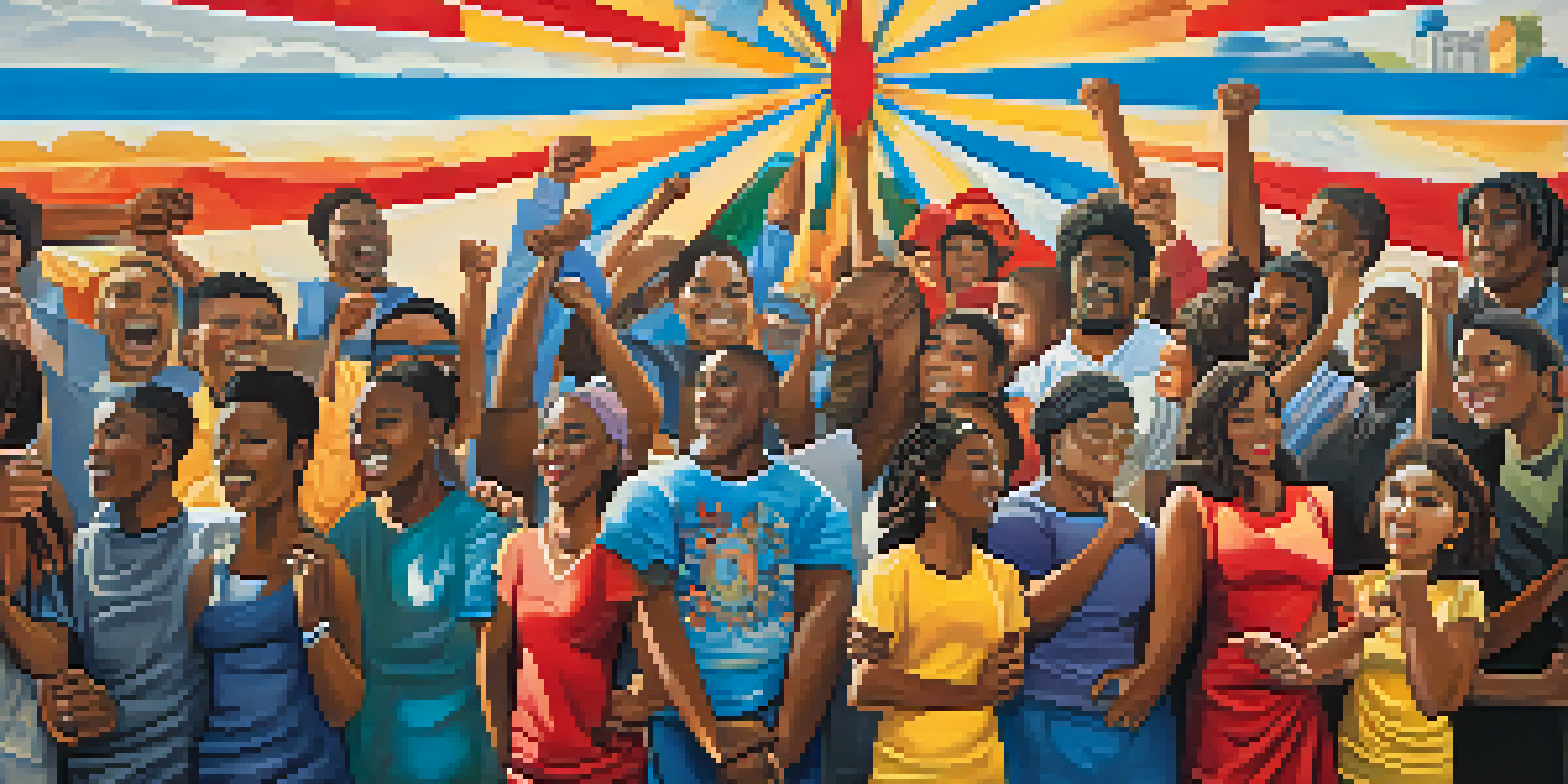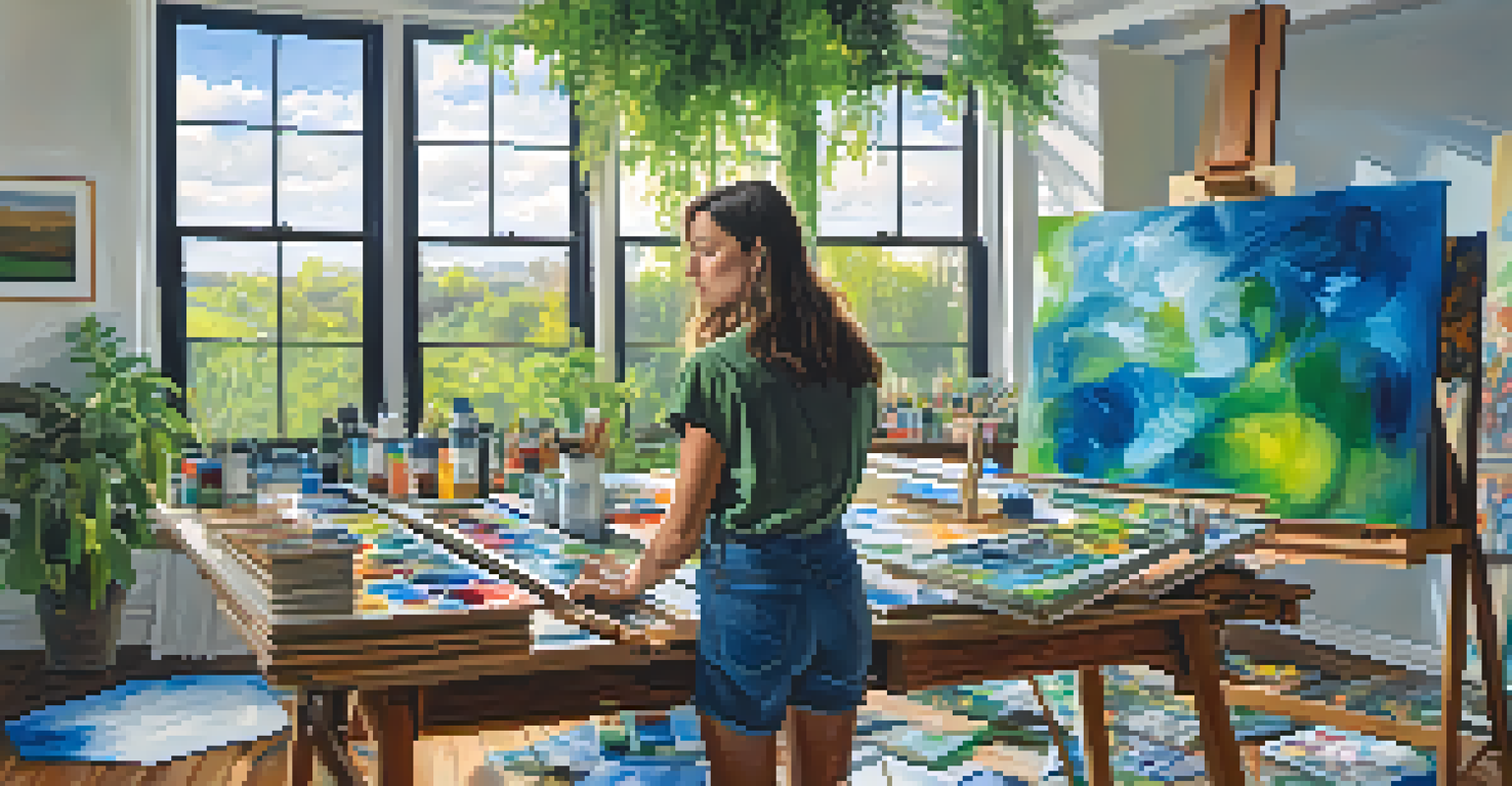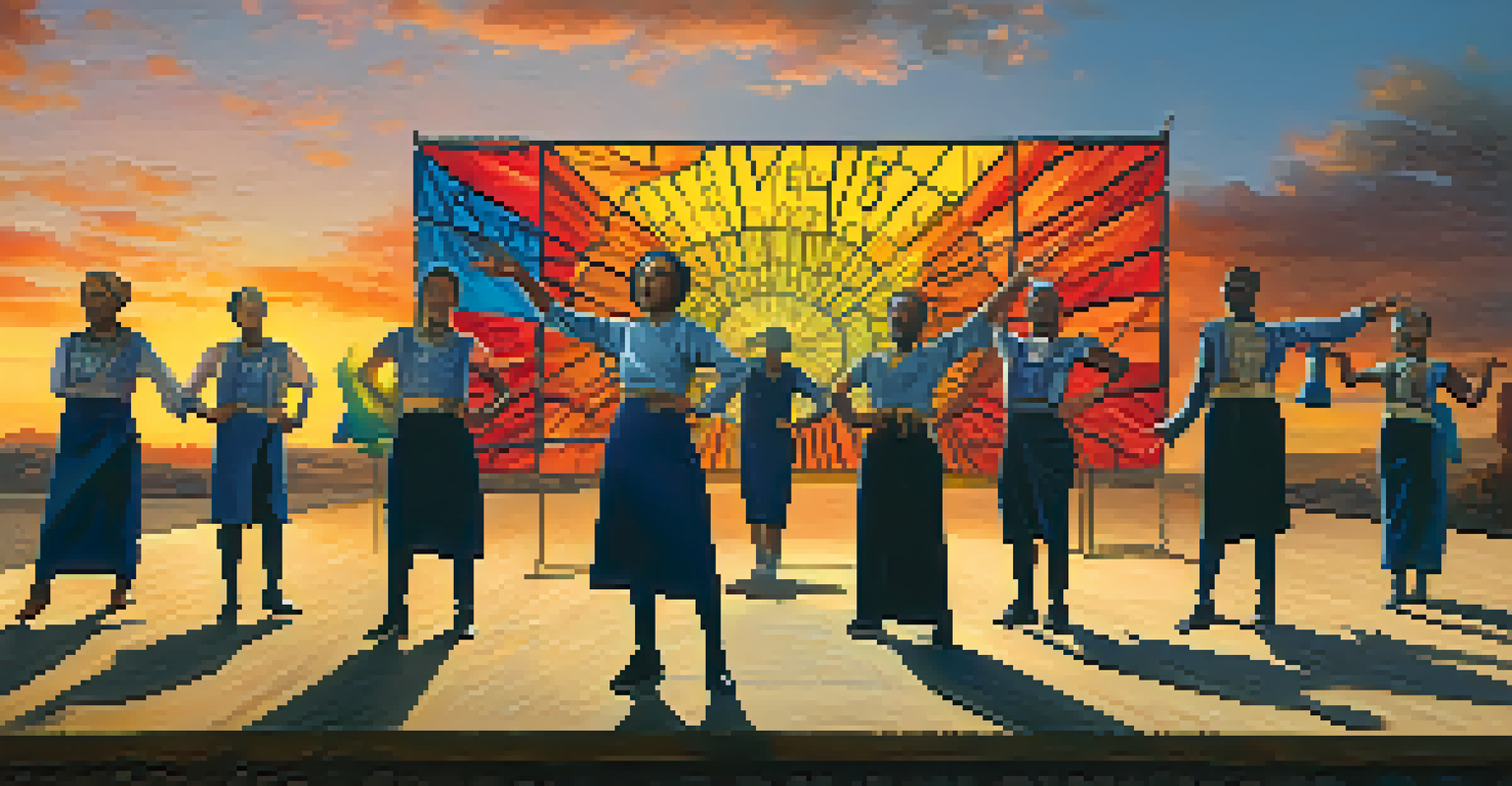Art as Resistance: Gender and Social Justice Movements

The Role of Art in Social Justice Movements
Art has long served as a powerful tool for social change. Throughout history, artists have captured the struggles and aspirations of marginalized communities, highlighting injustices that often go unnoticed. By weaving together visuals, music, and performance, art can evoke emotions that spark conversations and mobilize action.
Art is not a mirror held up to reality, but a hammer with which to shape it.
For instance, during the civil rights movement, artists like Jacob Lawrence used painting to depict the African American experience, conveying deep narratives of resilience and hope. These visual stories inspired people to reflect on their own beliefs and prompted them to join the fight for racial equality. Likewise, contemporary artists continue this legacy, addressing issues such as gender inequality and environmental justice.
Ultimately, art not only reflects society but also shapes it. It has the unique ability to challenge the status quo, encouraging individuals to think critically about the world around them. In this way, art acts as a catalyst for change, pushing movements forward and inspiring collective action.
Gender and Art: A Historical Perspective
Historically, women artists have faced significant barriers in gaining recognition for their work. Many have been overlooked or dismissed, yet they have consistently used their art to confront gender inequalities. From the suffragette movement to today’s feminist art, women have harnessed creativity to voice their struggles and advocate for change.

For example, artists like Judy Chicago and her iconic installation 'The Dinner Party' transformed the art world by celebrating women's contributions throughout history. This work not only challenged traditional narratives but also inspired a new generation of female artists to claim their space in the art community. Their courage and creativity have paved the way for discussions around gender and representation.
Art Fuels Social Change
Art has historically been a powerful tool for social justice, inspiring movements and encouraging critical dialogue around issues like gender inequality and environmental justice.
Today, the legacy of these pioneering women continues to influence contemporary movements. As new voices emerge, the conversation around gender and art expands, allowing for a richer, more diverse exploration of identity and experience. This ongoing dialogue reinforces the importance of art as a vital medium for gender equality.
Art as a Voice for Marginalized Communities
Art serves as a vital platform for marginalized communities to express their experiences and advocate for their rights. Through various mediums, artists can convey the struggles faced by their communities, drawing attention to issues such as racism, sexism, and classism. This expression not only fosters solidarity but also empowers individuals to take action.
The role of the artist is to make the revolution irresistible.
Consider the powerful murals created in communities impacted by violence and poverty. These murals often depict stories of resilience and hope, transforming public spaces into areas of healing and reflection. By sharing their narratives, artists challenge stereotypes and encourage a deeper understanding of their realities among broader audiences.
Moreover, art festivals and community projects can create safe spaces for dialogue and collaboration. These initiatives often bring together diverse voices, allowing for a richer exchange of ideas. In doing so, they highlight the strength and creativity of marginalized communities, reinforcing the idea that art is not just a form of resistance but also a celebration of identity.
The Impact of Digital Art on Social Justice
With the rise of digital media, artists now have unprecedented opportunities to share their work and messages with a global audience. Social media platforms serve as powerful tools for raising awareness about social justice issues. Artists can easily disseminate their art, reaching people who may not have access to traditional forms of media.
For instance, campaigns like #MeToo and #BlackLivesMatter have utilized digital art to amplify voices and foster community. Artists have created compelling graphics and videos that resonate deeply, encouraging individuals to join the conversation and take action. This democratization of art has empowered countless creators to participate in social movements.
Digital Art Empowers Advocacy
The rise of digital media has enabled artists to reach global audiences, amplifying voices in social justice movements and fostering community engagement through platforms like social media.
The accessibility of digital platforms also allows for diverse representation, showcasing perspectives from around the world. This interconnectedness not only enriches the dialogue around social justice but also emphasizes the role of art in building global solidarity. In an age where voices can easily be amplified, digital art continues to be a significant force for change.
The Intersection of Art and Activism
The relationship between art and activism is a dynamic one, where each influences and strengthens the other. Artists often find inspiration in the social movements around them, using their talents to advocate for change. This intersection creates a synergy that amplifies the messages of both art and activism.
For example, performance art has emerged as a powerful medium for activism. Artists like Ai Weiwei utilize their work to address human rights violations and political oppression. By engaging audiences through thought-provoking performances, they spark conversations that challenge societal norms and encourage critical thinking.
Moreover, collaborative projects that unite artists and activists can lead to impactful outcomes. These partnerships often result in community-driven initiatives that address local issues. By harnessing the power of art combined with activism, these collaborations can create lasting change and inspire others to take a stand.
Art in the Age of Climate Justice
As the climate crisis intensifies, artists are increasingly using their work to advocate for environmental justice. Art has the ability to visualize complex issues, making them more relatable and understandable. Artists can illustrate the impacts of climate change on communities, prompting conversations and inspiring action.
For instance, installations that highlight the effects of rising sea levels or deforestation serve as stark reminders of our environmental responsibilities. These art pieces not only raise awareness but also encourage viewers to reflect on their own actions. By connecting emotional responses to the urgency of climate action, artists can mobilize communities towards sustainable practices.
Collaboration Drives Impact
The intersection of art and activism creates powerful collaborations that address social issues, blending creativity with community-driven initiatives for lasting change.
In addition, collaborative art projects focusing on climate justice often bring together activists, scientists, and artists. This interdisciplinary approach fosters a deeper understanding of the issues at hand, blending creativity with factual information. Through this collaboration, art becomes a powerful vehicle for change, emphasizing the need for collective action in the fight against climate change.
The Future of Art as Resistance
Looking ahead, the role of art in gender and social justice movements continues to evolve. As new technologies and platforms emerge, artists will find innovative ways to engage audiences and advocate for change. The future of art as resistance will likely be shaped by diverse voices and perspectives, reflecting the complexities of our society.
Furthermore, the blending of art with activism will remain a crucial aspect of social movements. As younger generations become more involved in advocacy, we can expect a fresh wave of creativity and originality. These new artists will continue to challenge the status quo and inspire collective action through their work.

Ultimately, art will remain a vital force in the pursuit of social justice. Its ability to connect with people on a personal level makes it an invaluable tool for fostering understanding and empathy. As we navigate an increasingly complex world, art will continue to play a crucial role in shaping our shared future.